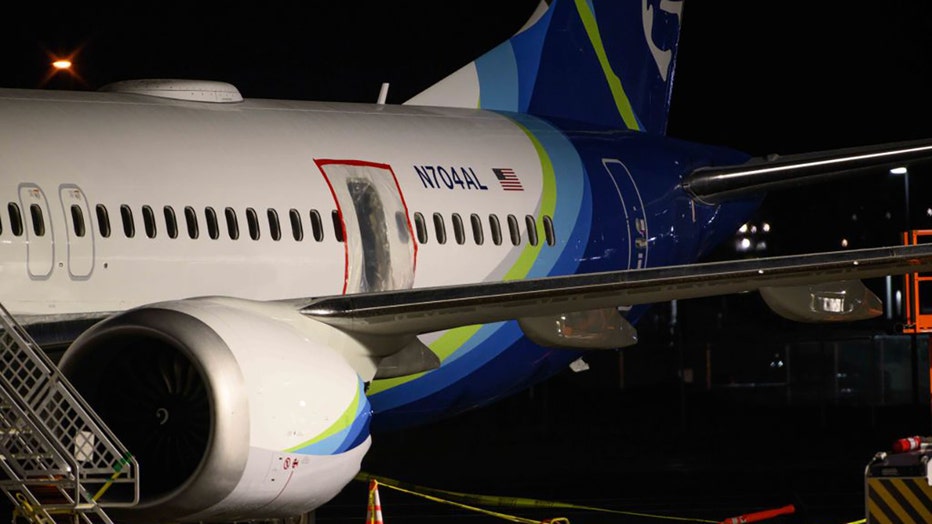Alaska Airline blowout: hanging question answered

Boeing CEO acknowledges company mistake in wake of Alaska Airlines' blowout
Boeing's CEO acknowledged the company's mistake in the wake of the Alaska Airlines incident.
PORTLAND, Ore. - There are some solid answers to some of the hanging questions about the Alaska Airlines Boeing 737 Max 9 blowout that ended more in passenger fear, as well as airline and manufacturer embarrassment, than death and destruction. But you may not like some of those answers.
By 4 p.m., Tuesday, United and Alaska had canceled 333 flights, many attributable to their heavy reliance on the now-grounded 737 Max 9. SFO Airport had 56 inbound and outbound cancelations, many attributable to the Max 9 grounding.
Had that blowout happened at cruising altitude, the outcome would almost certainly have been far, far worse than delays and cancelations. Now to the questions.
Perhaps the most worrisome question in the Alaska Air door plug blowout is, "Where are the four bolts that, if present and properly tightened, would have prevented the incident?"
"We have not yet recovered the four bolts that restrain it from its vertical movement. And we have not yet determined if they existed there. That will be determined when we take the plug to our lab in Washington DC," said Clint Crookshanks, an National Transportation Safety Board aerospace engineer.
The plane was allowed to fly last Saturday, even after the pressure warning system in the cockpit said there was a problem on three previous flights.

A plastic sheet covers an area of the fuselage of the Alaska Airlines N704AL Boeing 737 MAX 9 aircraft outside a hangar at Portland International Airport on Jan. 8, 2024, in Portland, Oregon. (Photo by Mathieu Lewis-Rolland/Getty Images)
This does not surprise aviation attorney and former U.S. Department of Transportation Inspector General Mary Schiavo. "What often happens is they don't find a problem. They take it in. They check it out. They say no problem found," said Schiavo.
The plane's log is simply amended to reflect that. It then becomes legally declared airworthy to fly again.
Yet, Alaska prohibited this almost brand-new plane from flying over water, thereby pulling it out of Hawaii service. "Alaska Airlines reported to the NTSB, that their internal policy is to restrict aircraft with multiple maintenance write-ups for certain aircraft systems," said National Transportation Safety Board Chair Jennifer Homedy.
"The blowout caused the impenetrable cockpit security door to fly wide open. It is designed to open during rapid decompression. However, no one among the flight crew knew that," said Homendy.
That, says the NTSB, includes the pilots. So, Boeing says it will make changes to the aircraft's manual.
Another question: How could the CVR, the cockpit voice recorder, which can hold two hours of pilot conversations, be recorded over after such a short turn around flight NTSB inspections, right after landing, may be partially responsible. "And it appeared to be powered up. As soon as they powered it up again, the CVR starts recording. So, I think that was probably a mistake," said Schiavo.
Instead of relying on on-board voice and data recorders, Inspector General Schiavo and the International Civil Aviation Organization say that information should be uploaded to satellites for instant access if there's an accident; instant erasure if there is not. "Certain pilots were objecting that is was a privacy issue in the cockpit. You have no privacy right in a cockpit," said Schiavo.
Many experts say the Federal Aviation Administration will have to make some changes to retain public confidence.

